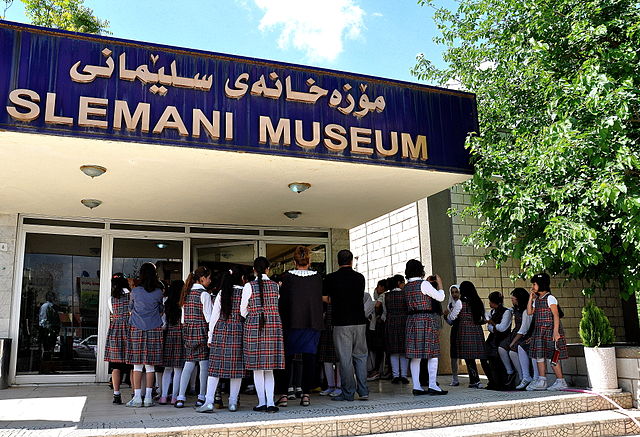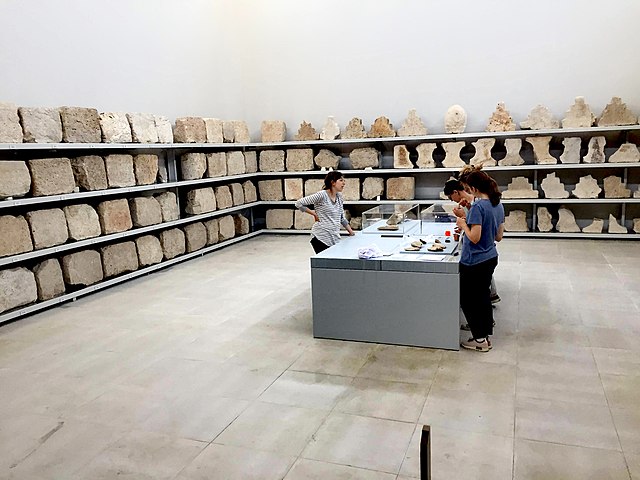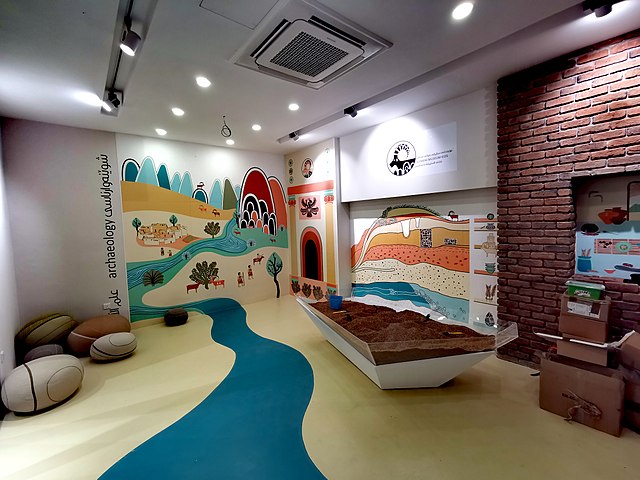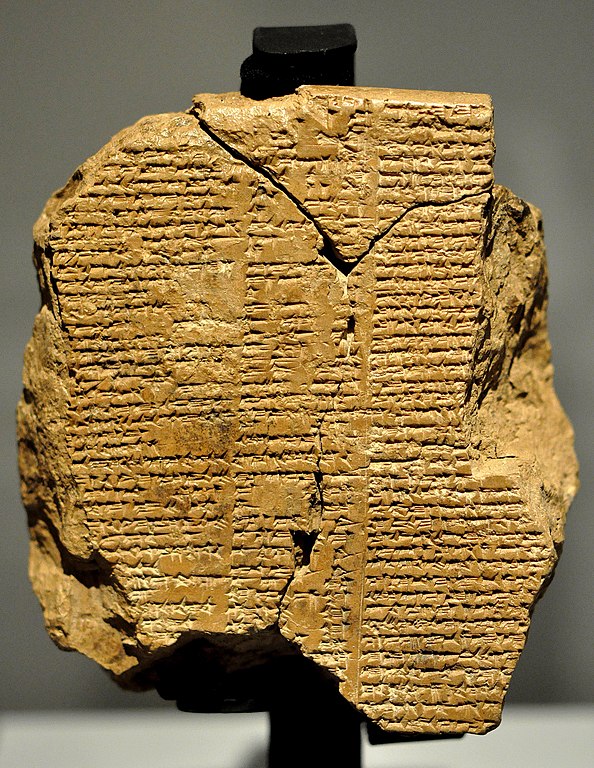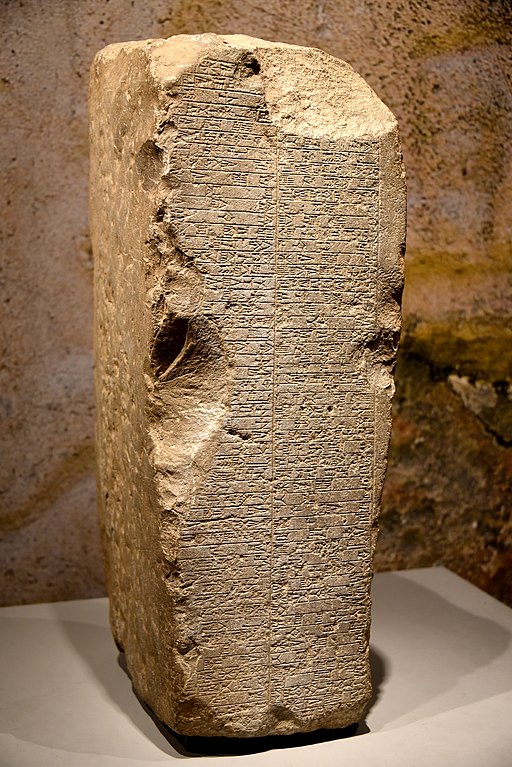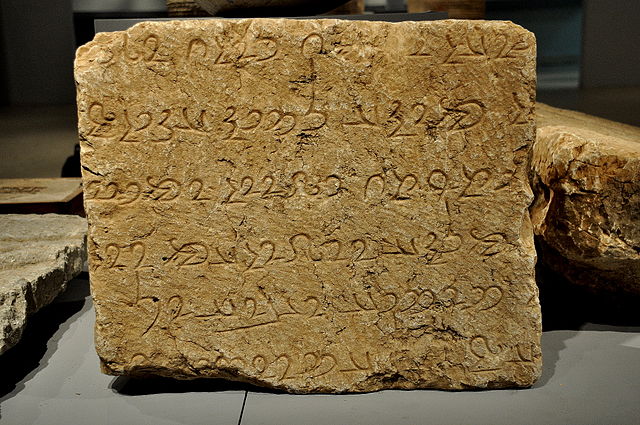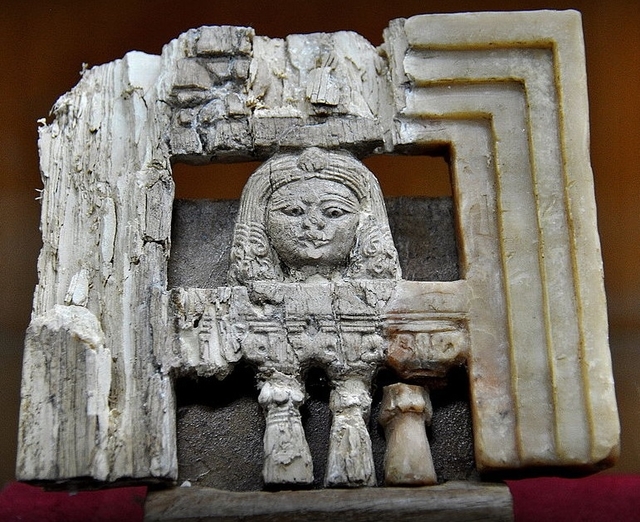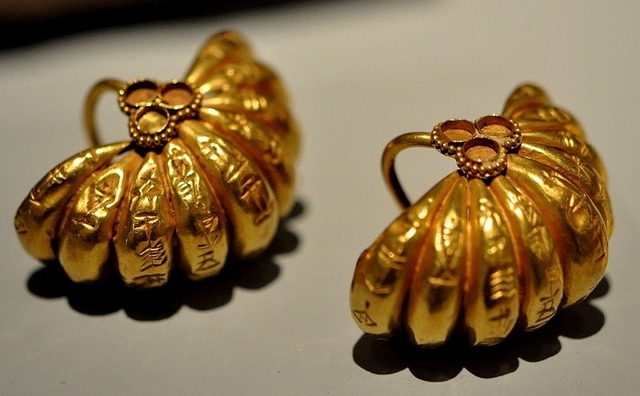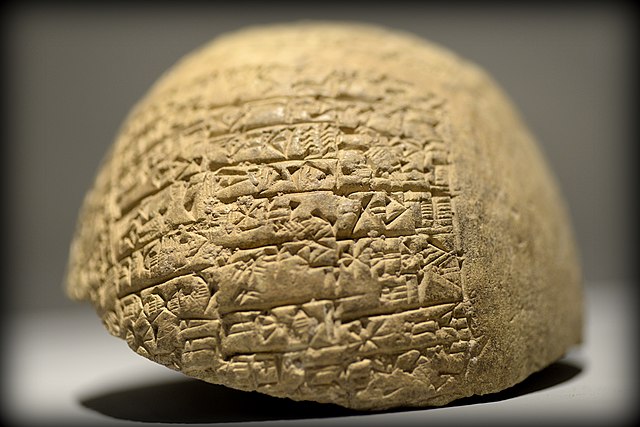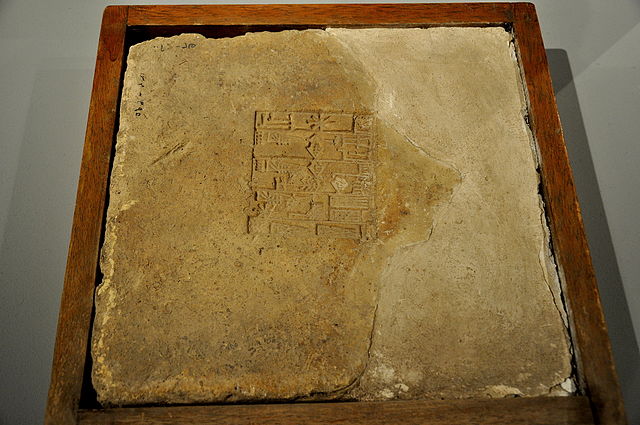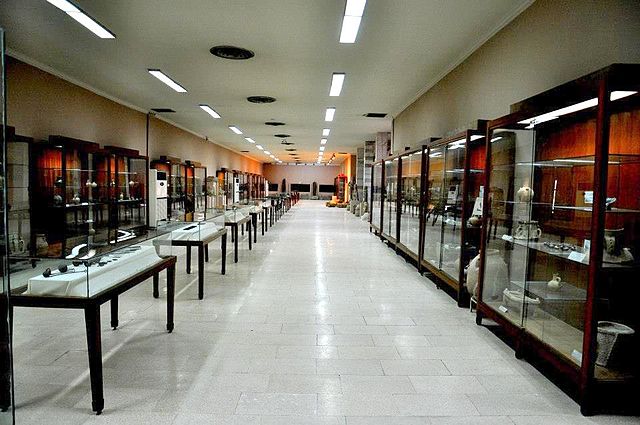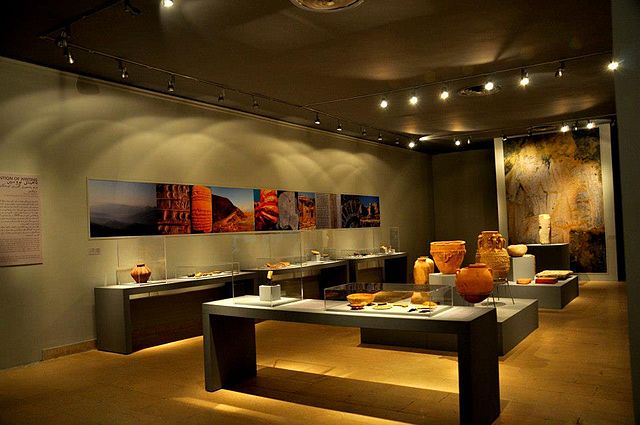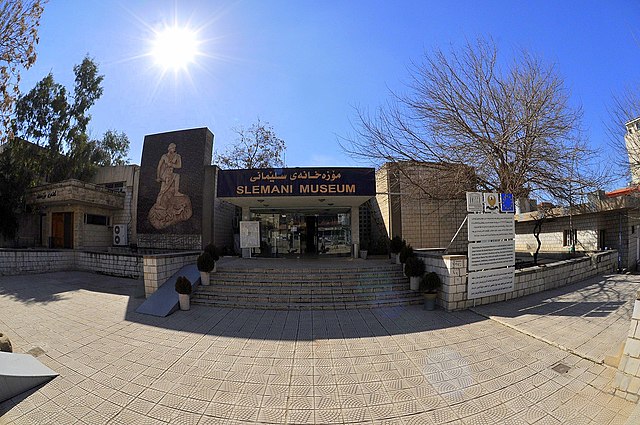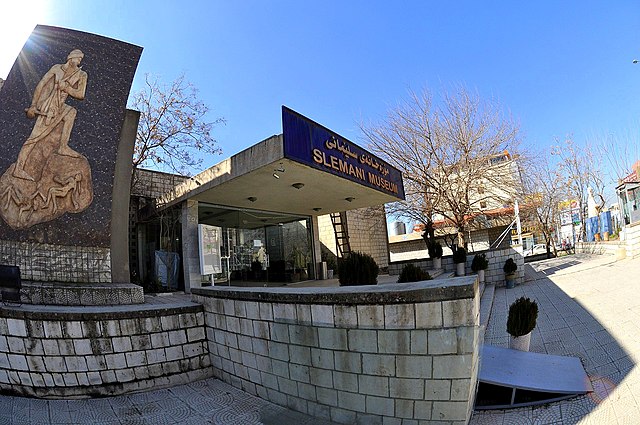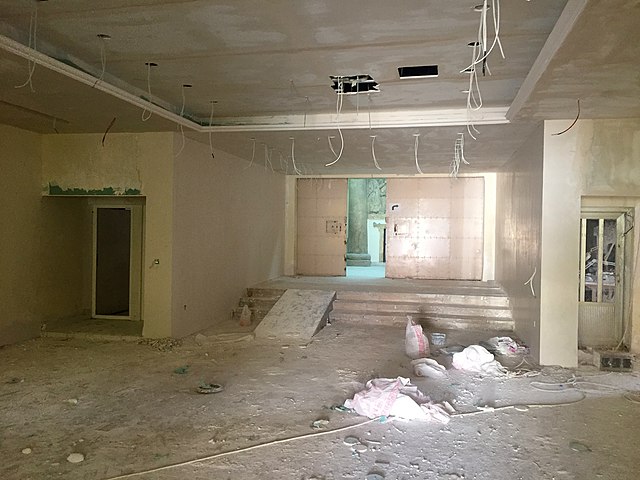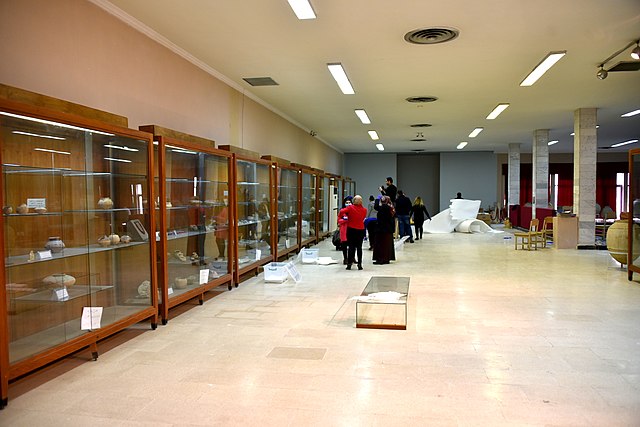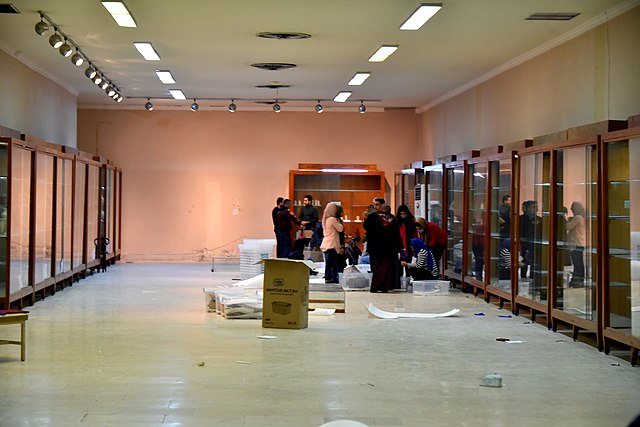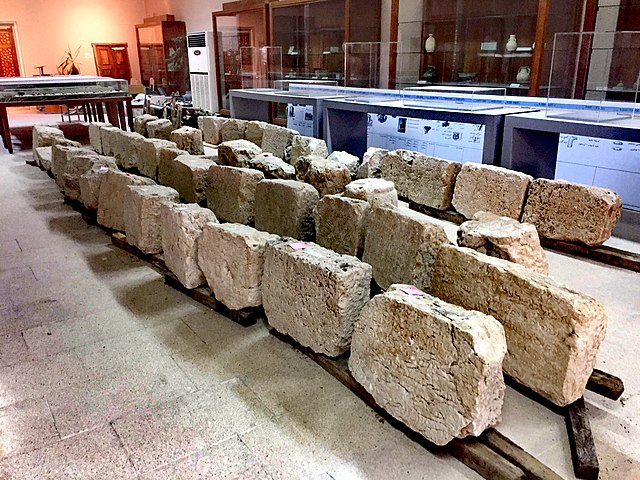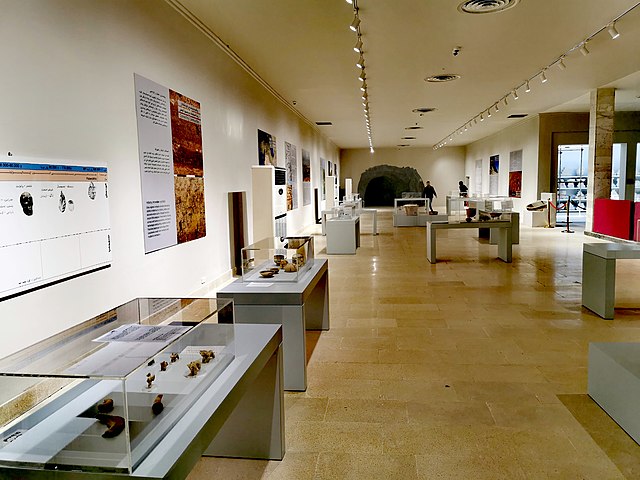
| SULAYMANIYAH MUSEUM
School children are visiting the Sulaymaniyah Museum Established
:
July 14, 1961
The Sulaymaniyah Museum or Slemani Museum, is an archeological museum located within heart of Sulaymaniyah in the Kurdistan Region of Iraq. It is the second largest museum in Iraq, after the National Museum of Iraq in Baghdad. It houses artifacts dating from the prehistoric period to the late Islamic and Ottoman periods. Several halls of the Museum have undergone renovation work and the Museum was closed to the public for refurbishment from October 1, 2018, to October 2019.
History
:
Post-2003
:
UNESCO
:
Paikuli Gallery :
The Paikuli Gallery at the Sulaymaniyah Museum, final preparations before official opening The Sulaymaniyah Museum in collaboration with the Sapienza University of Rome opened a new gallery on June 10, 2019. The gallery was sponsored by the Italian Ministry of Foreign Affairs (MAECI) and the Ministry of Cultural Heritage (MiBAC). All of the inscribed stone blocks (including many newly discovered ones after 2006) of the commemorative monument of the Sassanian king Narseh (c., 293 CE) were displayed for the very first time to the public. In addition, many building stone blocks and some Sassanian coins and bullae were also included in this permanent exhibition.
Selmani Museum Kids :
Slemani Museum Kids On September 5, 2019, the Sulaymaniyah Museum inaugurated a hall dedicated to children and called it "Slemani Museum Kids". The hall has many teaching and demonstrative tools for children. This small museum is the first bespoke museum space for children in Iraq. The Consul General of the UK in Kurdistan, Slemani governor, and director-general of the directorate of archaeology and antiquities in Kurdistan have attended the event, as well as many other high-ranking officials in Kurdistan Region in addition to the public. Slemani Museum Kids was a co-creation of the project Archaeological Practice and Heritage Protection in the Kurdistan Region of Iraq. The project is led by the University of Glasgow (UK) in collaboration with the Slemani Directorate of Antiquities and Inherit (UK) and is funded by the British Council's Cultural Protection Fund, in partnership with the Department for Digital, Culture, Media, and Sport.
Prehistory
Gallery :
Gallery :
Tablet V of the Epic of Gilgamesh
Stela of Iddi-Sin, King of Simurrum. It dates back to the Old-Babylonian Period. From Qarachatan Village, Sulaymaniyah Governorate, Iraqi Kurdistan. The Sulaymaniyah Museum, Iraq
Stone block with Paikuli inscription
"The lady at the window," one of the famous Nimrud ivories' plaques. The Sulaymaniyah Museum, Iraq
Earrings from Shulgi
An Inscribed stand's head, early dynastic period
A brick stamped with the name of Ur-Nammu of Ur
This is one of the two large halls of the Sulaymaniyah Museum
This hall was renovated by the UNESCO and was opened in April 2013. It contains most of the Sulaymaniyah Museum masterpieces
The Sulaymaniyah Museum, Iraqi Kurdistan
The Sulaymaniyah Museum, Iraq
The Sulaymaniyah Museum's entrance hall undergoing renovation work, December 3, 2018
Packing pre-historic Mesopotamian artifacts for storage, part of a renovation work. The Sulaymaniyah Museum, December 3, 2018
Packing Ur III and Old-Babylonian Mesopotamian artifacts for storage, part of a renovation work. The Sulaymaniyah Museum, December 3, 2018
Inscribed stone block of Paikuli Tower, Middle Persian and Parthian scripts, at the Sulaymaniyah Museum
The new permanent exhibition of Mesopotamian Prehistory, final preparations before official opening Source :
https://en.wikipedia.org/wiki/Sulaymaniyah_Museum |
